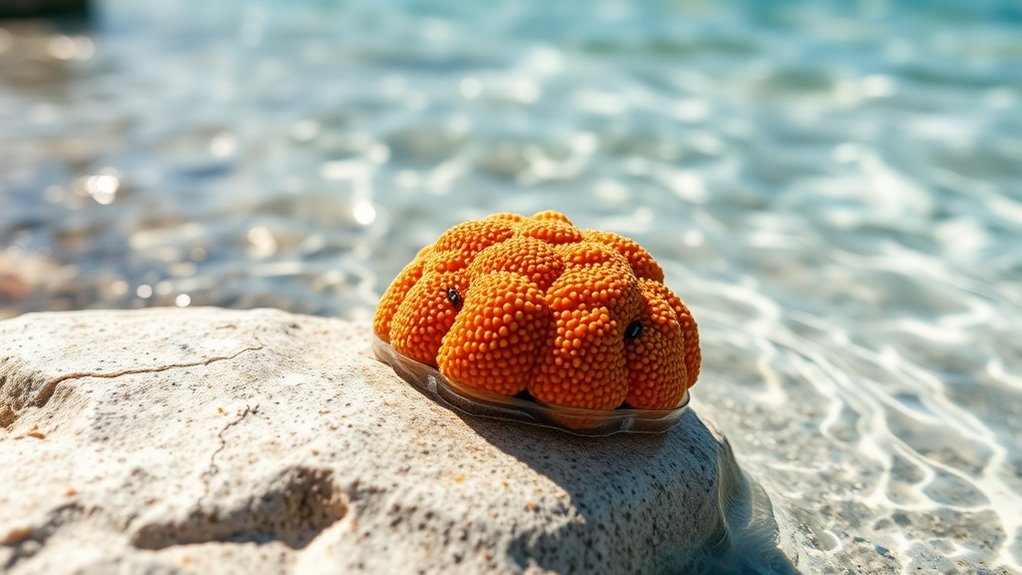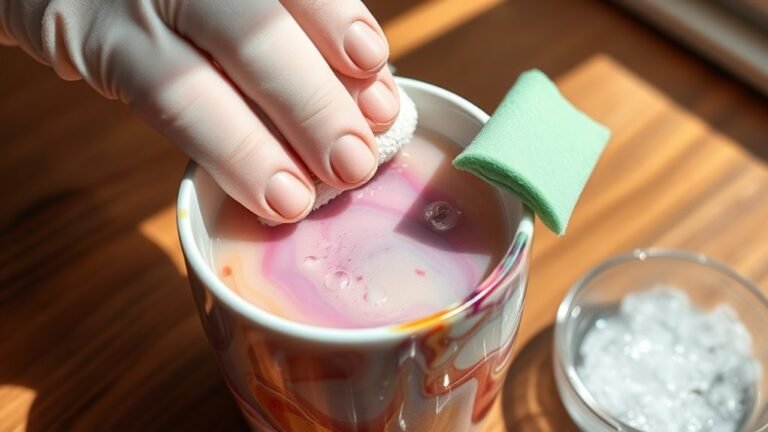How Do You Clean a Sea Sponge
To clean a sea sponge, start by soaking it in warm water for 10 to 15 minutes. This helps loosen dirt. Then, gently squeeze the sponge to release trapped debris—avoid twisting to protect its structure. Prepare a cleaning solution with mild soap or vinegar, rinse thoroughly to remove all residues, and air dry completely in a well-ventilated area. Store it away from direct sunlight to maintain its integrity. You’ll discover more helpful tips and techniques.
Preparation For Cleaning
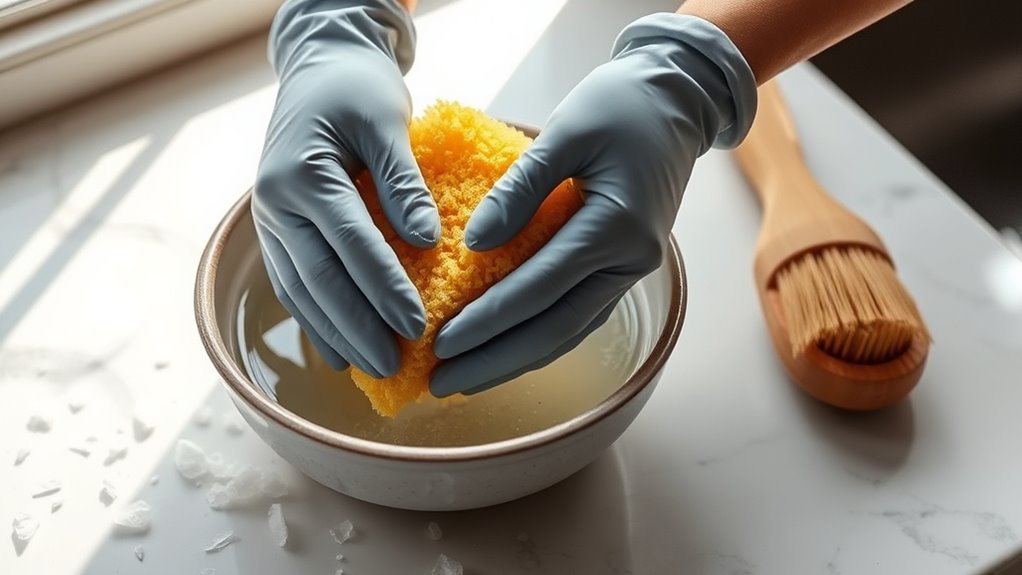
Before you begin cleaning your sea sponge, it’s crucial to gather the right materials and set the stage for an effective process. Start by identifying suitable cleaning techniques that’ll preserve the integrity of your sponge while guaranteeing thorough maintenance. You’ll need a gentle soap or a specialized sponge cleaner, avoiding harsh chemicals that can damage it. Prepare a bowl of lukewarm water to facilitate the cleaning process. Having a soft brush on hand can also help remove stubborn debris without harming the sponge. By taking these preliminary steps, you’ll ascertain that your sponge is well-maintained and ready for use. Remember, proper preparation is key to prolonging the lifespan and functionality of your natural cleaning tool.
Tools and Chemical Required
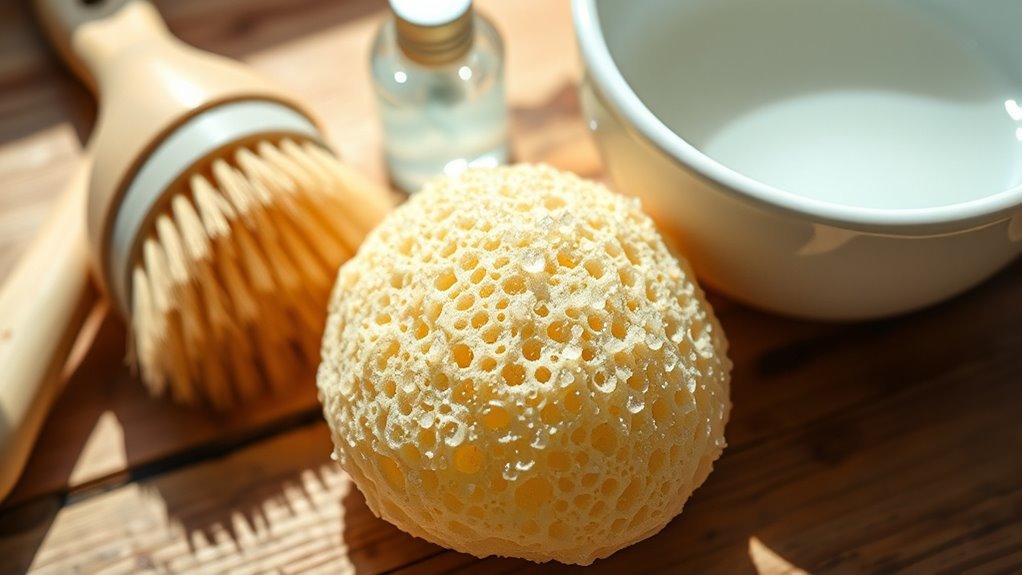
To effectively clean a sea sponge, you’ll need specific tools and chemicals that guarantee both cleanliness and preservation of its natural structure. Here’s a concise overview of what you’ll require:
| Tool/Chemical | Purpose | Notes |
|---|---|---|
| Warm Water | Soaking and softening | Essential for initial cleaning. |
| Mild Soap | Cleaning agent | Use biodegradable options. |
| Vinegar | Disinfectant | Helps eliminate odors. |
| Soft Brush | Gentle scrubbing | Protects sponge fibers. |
Using natural sponges means you should choose cleaning solutions that are gentle yet effective. Avoid harsh chemicals, as they can damage the sponge’s integrity. Prioritize eco-friendly options to maintain both your sponge and the environment.
How to Clean:
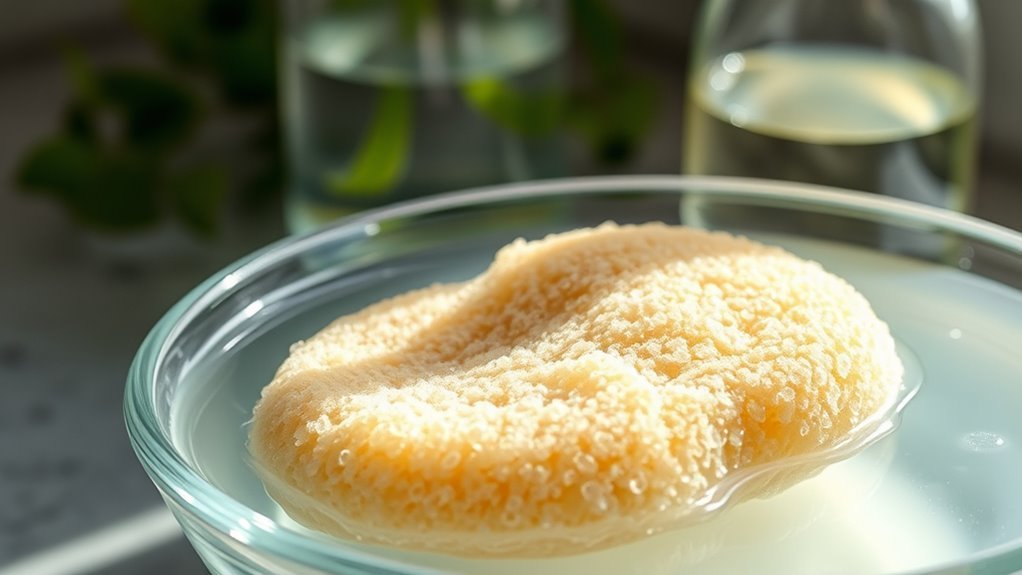
Step 1: Soak the Sea Sponge
- Begin the cleaning process by soaking the sea sponge in warm water.
- Allow the sponge to soak for about 10 to 15 minutes.
- This soaking step helps to loosen any debris and makes the cleaning process more effective.
Step 2: Squeeze the Sponge
- After soaking, gently squeeze the sponge to release any trapped dirt.
- Be careful not to twist or wring the sponge, as this can damage its structure.
Step 3: Prepare Cleaning Solution
- For natural cleaning, you can use a mild soap or a mixture of water and vinegar.
- If using soap, ensure it is gentle and suitable for delicate materials.
Step 4: Rinse the Sponge
- Rinse the sponge thoroughly under running water.
- Make sure to remove all soap residue to prevent any buildup.
Step 5: Air Dry the Sponge
- Proper sponge care involves letting the sponge air dry completely.
- Place it in a well-ventilated area to ensure it dries effectively.
Step 6: Store the Sponge
- Store the sponge away from direct sunlight to maintain its integrity.
- Avoid damp or closed storage spaces to prevent mold growth.
Safety Consideration
While cleaning a sea sponge can be a straightforward task, it’s vital to take into account safety precautions to avoid potential hazards. First, make sure you’re sourcing your sponge responsibly; overharvesting can threaten marine ecosystems. When cleaning, opt for natural alternatives, like mild soap or vinegar, to avoid harsh chemicals that can irritate your skin or damage the sponge. Wear gloves to protect your hands and avoid allergens. It’s also wise to rinse your sponge thoroughly in fresh water after cleaning to remove any residues. Finally, allow the sponge to dry completely to prevent mold growth. By following these safety considerations, you’ll not only maintain your sponge but also contribute to a sustainable approach towards marine resources.
Frequently Asked Questions
How Often Should I Clean My Sea Sponge?
You should aim to clean your sea sponge every one to two weeks, depending on its usage. This gentle maintenance guarantees it remains fresh and functional, enhancing its longevity. Regular cleaning frequency helps prevent any unwanted odors or buildup. To keep it in top shape, rinse it thoroughly with cool water after each use and allow it to dry completely. With these maintenance tips, you’re granting your sponge the freedom to perform at its best.
Can I Use a Sea Sponge for Cosmetics?
Yes, you can use a sea sponge for cosmetics, particularly for makeup application. Sea sponges are gentle on the skin and can provide a flawless finish when applying foundation or concealer. They offer skin benefits by promoting a more natural look and allowing for even distribution of product. Just make certain to clean your sponge regularly to maintain its effectiveness and guarantee a hygienic experience. Embracing this natural tool can enhance your beauty routine considerably.
Are There Specific Brands of Sea Sponges Recommended?
When choosing a sea sponge, you’ll find several reputable brands like The Sponge Company and SeaSponge.com. These natural sea sponges often outperform synthetic alternatives, providing superior softness and absorbency. However, not all natural sponges are created equal; some may harbor impurities. It’s crucial to read reviews and verify you’re selecting high-quality options. Ultimately, your choice can impact your experience, so weigh your options carefully to enjoy the benefits of nature’s best.
How Long Can a Sea Sponge Last With Proper Care?
With proper maintenance, a sea sponge can last several years, showcasing impressive sponge longevity. To guarantee its durability, you’ll need to rinse it thoroughly after each use and avoid exposing it to harsh chemicals. Regularly drying it between uses helps prevent mold growth. If you treat your sponge with care, you’ll not only enjoy its benefits longer but also embrace a more sustainable lifestyle, giving you the freedom to appreciate its natural qualities.
Can Sea Sponges Harbor Bacteria if Not Cleaned Properly?
Yes, sea sponges can harbor bacteria if you don’t maintain proper sponge hygiene. Without regular cleaning, bacteria growth can occur, potentially leading to unpleasant odors and health concerns. It’s crucial to rinse your sponge thoroughly after use and allow it to dry completely to minimize the risk of bacteria thriving. By being proactive about your sponge care, you can guarantee its longevity and keep it free from harmful microorganisms.
